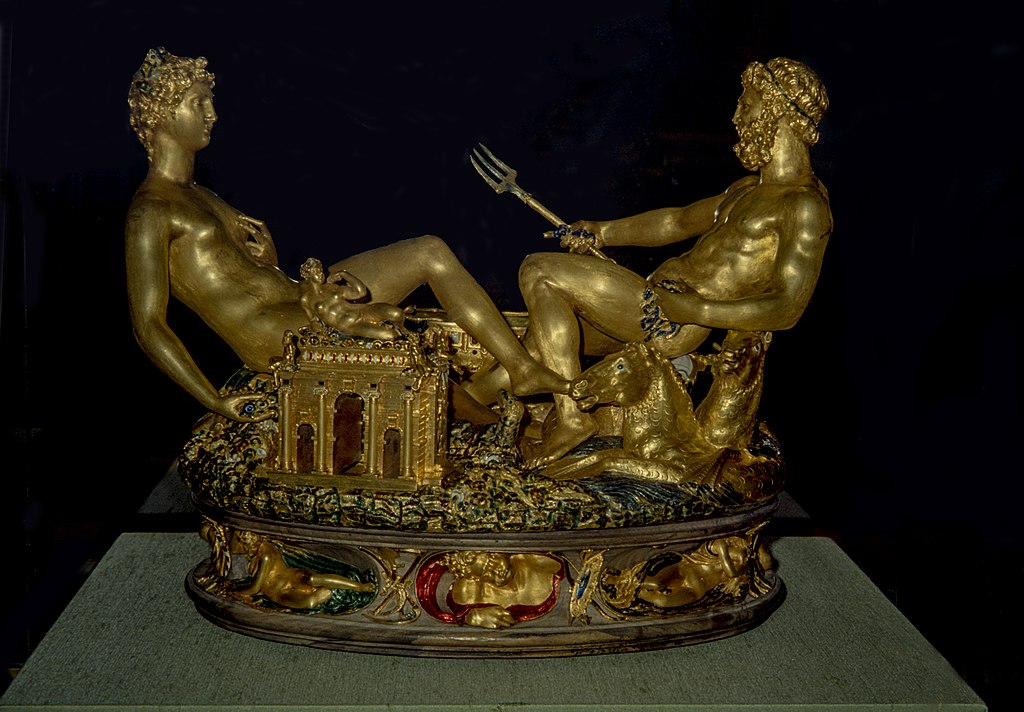
What Is Benvenuto Cellini Known For
The Renaissance was a period defined by unparalleled artistic expression, and few figures capture the vibrant spirit of this time like Benvenuto Cellini. A goldsmith, sculptor, writer, and swaggering adventurer, Cellini’s life was as extravagant and flamboyant as the works he created. Today, his art stands as a testament to both exceptional technical brilliance and an unyielding dedication to the ideals of beauty, strength, and individuality. This article explores the legacy of Cellini, focusing on his process, his most renowned sculptures, the monetary and historical value of his work, and where one can find his masterpieces today.
Who Was Benvenuto Cellini?
Born in Florence on November 3, 1500, Benvenuto Cellini was a true Renaissance man. Though he began his career as a goldsmith, he later rose to prominence as a master sculptor, working under the patronage of powerful figures like Pope Clement VII, King Francis I of France, and Grand Duke Cosimo I de’ Medici.
Cellini is best known for his technical virtuosity, dramatic storytelling, and bold personality, a man who once shot a rival goldsmith and was repeatedly jailed for various crimes. He documented much of his life in his autobiography, The Life of Benvenuto Cellini, which remains one of the most candid and colorful accounts of an artist’s life from the Renaissance period.
Benvenuto Cellini is primarily known for:
His extraordinary craftsmanship in sculpture and metalwork
His larger-than-life personality and dramatic autobiography
His contributions to Mannerism, a style that followed the High Renaissance and emphasized grace, tension, and elongated proportions
His service to European courts, especially in Rome, Florence, and Paris
The Perseus with the Head of Medusa, widely considered his sculptural masterpiece
Cellini’s renown extends beyond his technical skill. His writing, particularly his autobiography, has contributed greatly to his fame, offering insight into the social, political, and artistic dynamics of his time. He was, in every sense, the embodiment of the Renaissance humanist: fiercely individual, deeply intellectual, and endlessly creative.
How Did Benvenuto Cellini Make His Art Sculptures?
Cellini’s work combined precision goldsmithing with grand-scale sculpture, something very few artists could manage. His process for creating sculptures was intricate, dangerous, and intensely personal. He often insisted on casting large bronze sculptures himself, something even many trained foundrymen avoided due to the complexity.
Here’s a breakdown of how Cellini approached his sculpture-making:
1. Design and Drawing
Every project began with meticulous sketches and small models (called bozzetti). These designs were often dynamic, showing multiple perspectives and movements. He drew inspiration from classical antiquity, religious themes, and mythology.
2. Wax and Clay Models
He created clay or wax models, refining them until the details aligned with his vision. For his larger sculptures, he built life-sized clay prototypes. These helped guide the casting process.
3. Lost-Wax Casting
Cellini was a master of the lost-wax casting technique, an ancient method that allowed for intricate detailing in metal. The process was risky and complex:
A wax model was covered in clay to create a mold.
The wax was melted out, leaving a cavity.
Molten metal, often bronze, was poured into the cavity.
After cooling, the mold was broken open to reveal the final sculpture.
For his “Perseus with the Head of Medusa,” Cellini famously faced a crisis during casting, his furnace cracked, and the bronze began to cool too quickly. In a moment of desperation, he supposedly threw all his pewter dishes and tin cookware into the mix to save the casting. This act of improvisation paid off, and the final sculpture remains one of the crowning achievements of Renaissance art.
4. Chasing and Finishing
Once the casting was complete, Cellini worked tirelessly to refine the surface details, chiseling, polishing, and gilding parts of the sculpture. His background as a goldsmith gave him a fine eye for precision, and he applied this to the tiniest ornamental flourishes.
What Is Benvenuto Cellini’s Most Famous Art Sculpture?
While Cellini created numerous masterpieces, “Perseus with the Head of Medusa” stands as his most iconic work.
“Perseus with the Head of Medusa” (1545–1554)
Commissioned by Cosimo I de’ Medici for the Loggia dei Lanzi in Florence’s Piazza della Signoria, this monumental bronze sculpture depicts the Greek hero Perseus triumphantly holding the severed head of Medusa, her serpentine locks writhing in bronze.
Why It’s Famous:
Historical Significance: It was one of the first monumental bronze sculptures of its kind to be cast in one piece in modern Europe.
Political Symbolism: Perseus represents the power of the Medici family over enemies of the state, mirroring Perseus’ triumph over the monstrous Medusa.
Technical Brilliance: The sculpture is celebrated for its anatomical precision, dynamic composition, and the sheer difficulty of its casting.
Artistic Detail: The base of the sculpture includes detailed reliefs from the Perseus myth and features astonishing craftsmanship.
Today, “Perseus with the Head of Medusa” still stands in the Loggia dei Lanzi, a public gallery adjacent to the Palazzo Vecchio, drawing millions of admirers annually.
How Much Are Benvenuto Cellini’s Art Sculptures Worth?
Benvenuto Cellini’s sculptures are priceless cultural treasures, often housed in museums and rarely, if ever, sold on the open market. That said, when items attributed to him or his workshop come up for auction, they fetch astronomical prices.
For instance:
Smaller bronze works and medals by Cellini or attributed to his circle have sold for hundreds of thousands to millions of dollars.
A salt cellar made for King Francis I of France, called the Saliera, is one of the few surviving gold pieces by Cellini and is considered the most valuable of its kind. Valued at over €50 million, the piece is housed in Vienna’s Kunsthistorisches Museum.
Large sculptures like “Perseus” or busts of notable figures would be worth tens (if not hundreds) of millions, but they are considered part of national heritage and are essentially beyond market value.
In short, Benvenuto Cellini’s works are not just artworks, they are cultural patrimony. Their worth lies not only in market price but in historical significance, national pride, and global artistic legacy.
Where Are Benvenuto Cellini’s Art Sculptures Located Today?
Many of Cellini’s works survive, though some are lost, and others exist in fragments or records. Here’s where you can find his major surviving works today:
1. Florence, Italy
“Perseus with the Head of Medusa”, Loggia dei Lanzi, Piazza della Signoria
Bust of Cosimo I de’ Medici, Bargello Museum
Various gold and bronze works at the Museo Nazionale del Bargello
2. Vienna, Austria
Saliera (Salt Cellar) – Kunsthistorisches Museum
This magnificent gold sculpture, made for King Francis I, features Neptune and Earth personified and is a masterpiece of Mannerist design.
3. Paris, France
Cellini worked for King Francis I and left behind drawings, medals, and minor works that are preserved in the Louvre Museum.
4. Rome, Italy
Various architectural works, including designs for fortifications and decorative elements, remain in record if not in physical form.
5. Private Collections & Auction Houses
Some items, especially medals and small bronzes, reside in private collections or occasionally appear in major auction houses like Sotheby’s and Christie’s.
The Enduring Impact of Benvenuto Cellini
Benvenuto Cellini wasn’t just a sculptor, he was a storyteller, a craftsman, a soldier, and a chronicler of his time. His sculptures aren’t just forms in bronze or gold; they are expressions of drama, power, and human ambition. He turned mythology into movement, metal into flesh, and self-aggrandizement into a form of artistry.
His legacy lives on not just through his statues but also through the inspiration he continues to offer modern artists and art lovers alike. From the gleam of the Saliera to the shadowed face of Perseus, every piece carries the echo of a man who lived for his art, fought for recognition, and captured the fierce spirit of the Renaissance like few others could.
To stand before a work of Cellini’s is to be reminded of the greatness that can arise when skill meets passion, when the hammer strikes with purpose, and molten bronze takes the form of myth.



